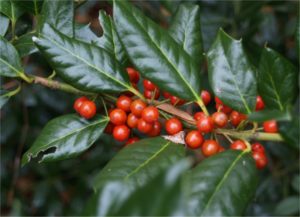Be-a-Better-Gardener
Energy-Efficient Landscapes
By Thomas Christopher
This is the season when wintery weather drives us indoors. It’s a time for pondering landscape improvements. It’s also the time of year when elevated utility bills forcibly remind us of the cost of living in the Northeast. Why not combine the two concerns this February, and plan a spring campaign to improve the energy efficiency of your home?
We tend to think of energy efficiency in terms of internal improvements to our home: adding insulation or upgrading the furnace, for example. Such steps are important, of course. Yet how you arrange the exterior, the landscape, also plays a large role.
A well-placed windbreak, for instance, can reduce heating bills by as much as 25 percent. Consider how the daily weather report in winter typically includes not just the outdoor temperature but also a note about the wind chill. The latter is a measure of how much heat is lost by an unprotected body due to the cooling effect of the wind. There’s a similar effect on your house. The wind forces cold air through the cracks around windows and doors and other openings. The amount of heat lost in this way can be significant – on the coldest, windiest days, such infiltration of frigid air may cause 50 percent of the heat loss from the house.
One way to reduce this sort of heat loss is to plant a windbreak in the direction of winter’s prevailing wind. In our part of the Northeast, this means that you should typically locate the windbreak to the northwest of the house. Plant a band of medium-tall evergreen trees such as arborvitaes (Thuja occidentalis) or red cedars (Juniperus virginana) mixed with evergreen shrubs such as hollies (Ilex spp.) or yew (Taxus spp.). Ideally, set this windbreak a distance upwind from the house equal to one to three times the expected mature height of the trees.
If you don’t want to take on a project of this scope, you can still derive substantial fuel savings by surrounding the foundation of your house with a band of shrubs. This will create a dead air space around the foundation that reduces heat loss. Set the shrubs far enough from the house so that at least a foot remains between their branch tips and the foundation when the shrubs are mature.
Another energy saving planting involves setting deciduous shade trees to the south and west of your house. Arranged this way the trees keep the summer sun off the house, then drop their leaves in fall to allow sunlight to penetrate to and warm the house in winter. Plant the trees 15 to 20 feet away from the foundation and select a species that is fast-growing but sturdy such as a Freeman maple (Acer x freemanii). A hybrid of red and silver maples, this tree will, if planted into fertile soil, add two to three feet to its height annually, eventually reaching 40 to 60 feet tall with a spread of 20 to 40 feet. On a hot summer day, the temperature in a deciduous tree’s shade will be as much as 25°F. cooler than its sun-lit surroundings. As a result, the air conditioners in a well-shaded house will have much less to do to keep your living space comfortable. Indeed, skillful planting can reduce summer cooling bills by as much as fifty percent.
If a planting plan of this sort sounds ambitious to you, keep in mind that it’s fine to start small. According to computer models developed by the U.S. Department of Energy, just three trees properly placed can save the average household $100 and $250 in energy bills annually. Energy-wise landscaping is a sound investment: on average, a well-conceived design should provide enough energy savings to repay the cost of installation in less than 8 years.
Thomas Christopher is the co-author of “Garden Revolution” (Timber Press, 2016) and is a volunteer at Berkshire Botanical Garden. berkshirebotanical.org
Be-a-Better-Gardener is a community service of Berkshire Botanical Garden, one of the nation’s oldest botanical gardens in Stockbridge, MA. Its mission to provide knowledge of gardening and the environment through 25 display gardens and a diverse range of classes informs and inspires thousands of students and visitors on horticultural topics every year. Thomas Christopher is the co-author of Garden Revolution (Timber press, 2016) and is a volunteer at Berkshire Botanical Garden. berkshirebotanical.org.




